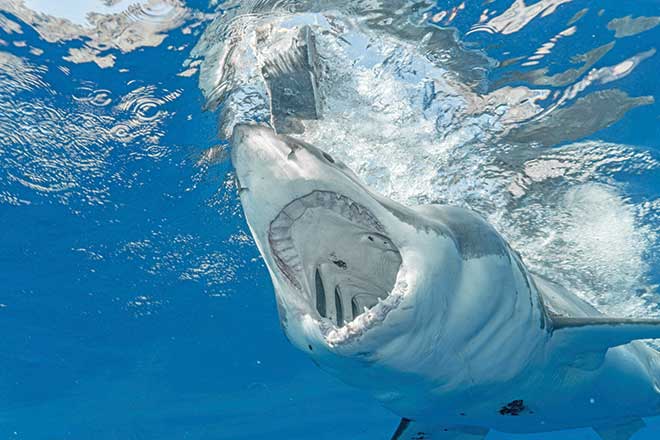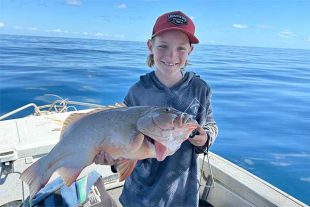Recent news items indicate that Australia has one of the highest numbers of shark attacks in the world.
Environmentalists however state that sharks are endangered in Australian waters.
These two statements are, to a large extent, contradictory.
How can we have one of the highest number of attacks with so few sharks?
One explanation is that the statement that sharks are endangered is incorrect.
Yes, certain species of sharks are endangered, but to use these to make a generalisation is incorrect.
Species such as the oceanic white tip are endangered, though we rarely see these in our coastal waters.
Whaler sharks, in particular the black whaler or bull shark, cannot be classified as endangered.
If the reported shark attacks are studied, two species appear to form the majority of attacks.
The first is the great white.
Agreed, the great white was endangered, however it now seems there is a comeback occurring.
With the protection of seals – one of the shark’s main preys – the increase in their food supply has aided in the recovery of their numbers.
Human contact in situations such as shark dives has also decreased the sharks’ fear of humans.
As one of the apex predators in the ocean, great whites test what they are able to eat by biting it, while smaller species tend to nose their larger intended prey first to determine if it could be aggressive back.

With the increasing numbers of great whites and the increasing incursion of humans – mainly surfers and divers – into their habitat, it is understandable that instances of conflict between the two species will increase over time unless some factor changes.
The second shark species implicated in the majority of attacks is the whaler shark, in particular the black whaler or bull shark.
Now there is no evidence that the bull shark is endangered, yet it is protected by Queensland regulations, which state that the possession limit for sharks is one, and it is not to be over 1.5m in length.
The increased numbers of attacks on humans attributed to the whaler shark and evidence of increased predication of angled fish by both amateur and professional fishers would indicate that numbers of whaler sharks are increasing in freshwater, estuary and coastal waters.
Note that personal experience on remote reefs also indicates that shark numbers and their aggressiveness is increasing, even on remote and rarely fished reef systems.
The following will concentrate on the whaler shark species.
The first question that needs to be asked is why the number of human attacks and the increased predication of hooked fish.
The first point is the one shark possession limit.
In reality, this would have minor effect on sharks numbers, unless the species could be harvested in commercial numbers.
The second limit is of greater effect.
The 1.5m maximum size limit has protected the more mature sharks in the system.
This means that the number of shark pups in the system are also increasing.
The larger sharks are also becoming more common and interaction with humans in their environment is also becoming common.
Whaler sharks regularly hunt in murky or dark conditions and are more prone to bite their intended prey first, rather than only nosing to ascertain if the object is edible.

With the increased average size due to size-take restrictions, these ‘bites’ are becoming increasingly severe.
A further variable that is increasing the aggressiveness of the whaler shark is the reduction of its natural food supply.
Normally whaler sharks would predate on shoaling baitfish.
An example of this is the news videos of sharks chasing pilchard schools along the NSW Queensland coast every year.
These sharks also chase the tailor and mullet schools along the same coastline during their spawning runs.
From my personal experience, in the late 1970s I remember huge schools of mullet travelling past the southern end of Bribie Island being severely harassed by sharks, tuna, mackerel and other larger ocean predators.
These mullet runs appear to have disappeared – I feel mainly due to the increased pressure of beach netters targeting the run as it moves along the coast.
I also feel that this reduction in food is the main reason for the decline of the grey nurse shark.
These mullet migrations formed the basis of the food chain of the grey nurse.
The whaler appears to have adapted to other food sources, however the grey nurse is being starved out.
Just like the kangaroo, when food is scarce, the females will cease any embryo development until better pastures are found.
Perhaps a marine research group should investigate this with regards to the grey nurse.
Indications are that whaler sharks have adapted to the reduced number of schooling migratory fish by targeting more sedentary fish stocks.
Currently, anglers across Queensland – commercial, charter operators or recreational – are having a large percentage of their catch taken by sharks.

In days past, you would expect to lose a few fish to sharks, yet lately, unless a fish is small enough to be quickly pulled to the boat, it is most likely going to be taken.
Before, you may have lost a part of your fish, as the sharks tended to be smaller and less aggressive, and to have half a 5kg demersal fish come to the boat would normally occur.
The sharks today are in the 2-3m range – this can be easily verified when the shark comes up to the boat – and with the extra competition, they are taking larger fish in single bites.
This is also evident with pelagic fish, which are targeted as soon as they exhibit any sort of stress situation, such as being hooked.
One other point that has become evident is that the sharks are learning to identify the sound of boats, anchor chains and electric motors with the possibility of an easy feed from a hooked fish.
For this reason, the sharks are targeting areas that are also top locations for anglers.
In short, many millions of dollars of prime-eating fish are being wasted to sharks.
It should also be noted that suggesting saving these fish from fishers and that people should be barred from fishing is ridiculous.
Even if the fishos were not there to provide an easy meal, the sharks must still feed.
What can be done in regards to the shark situation?
I feel that a cull of the whaler shark population is required.
This is not to say they should just be killed, but that there should be an industry created to utilise them.
Currently, we have illegal foreign fishing vessels coming into Australian waters to harvest shark – in most cases, solely for their fins.
If commercial fishers were to harvest these sharks for their fins and then distribute these legally to the market currently supplied by the illegal fishers, two outcomes could be met.

The first is that fishers who may be displaced by restrictions could have a viable market to continue earning a living.
The second outcome is that by regulating the market, the price of fins would decrease and the incentive for the illegal fishers to come to Australia would lessened.
Shark fins however are not the only marketable product from the sharks.
Shark skin – also known as shargrin – was utilised in Victorian times to cover sword grips, to ensure they were non-slip, even when covered in slippery blood.
A market for this form of non-slip covering could be developed.
Shark livers have previously been used to extract oil, which had medicinal and mechanical application – mako oil is still available.
The cartilage of sharks was also used for medicinal purposes, especially in the treatment of arthritis.
Shark teeth and jaws can be utilised for tourist mementos.
Finally, the meat of smaller sharks can be sold commercially.
Flake is a mainstay in southern states and would be an alternative to fish such as basa that are imported.
One drawback of using sharks for food would be the levels of heavy metals in the flesh of larger sharks.
Again, a safe size limit would need to be found, but the meat of larger sharks could be used in other ways – perhaps as fertiliser, as is the usage of carp.
By allowing the harvesting of whaler sharks, those fishers displaced by the gillnet bans and net free zones can continue to operate.
Importantly though, this fishing should be limited to line fishing not netting, as this would negate the benefit of gillnet bans.
Also, reducing the numbers of sharks will decrease the wastage of fish that are taken by sharks.
Likewise, by reducing the pressure of sharks on these demersal and pelagic species, their numbers will also benefit.
In conclusion, the reduction of larger shark numbers should reduce the aggression they currently exhibit in feeding and reduce the number of human attacks.
Kevin Behrens
 Bush ‘n Beach Fishing Magazine Location reports & tips for fishing, boating, camping, kayaking, 4WDing in Queensland and Northern NSW
Bush ‘n Beach Fishing Magazine Location reports & tips for fishing, boating, camping, kayaking, 4WDing in Queensland and Northern NSW









